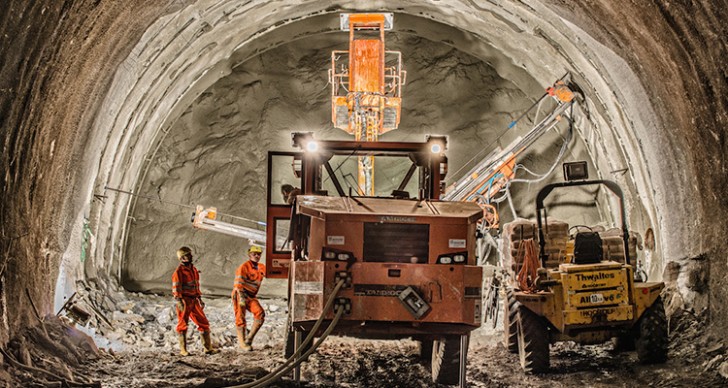In today’s post, Maarten van den Berg, a BIM manager at Infranea, introduces to us his masterclass where he compares the reverse engineering methods applied in tunnel refurbishment projects. The masterclass will take place on the 13th of November. Enroll here.
Tunnels are important connections in the infrastructure network with high safety standards. Every tunnel is an integral working system of civil, mechanical, electrical and software subsystems. Rising safety levels, outdated safety systems and degraded materials result in a growing amount of tunnel refurbishment projects. Virtual Design and Construction (VDC) increase the accuracy in design and engineering data with a First-Time Right construction process as an objective.
This presentation compares the reverse engineering methods applied in tunnel refurbishment projects with different types of geometry. Point cloud data and as-built information compose the input for the VDC as-is model. We show the data extraction in Civil 3D and the Dynamo scripts for tunnel element reconstruction in Revit. Also, the position of the new equipment is managed with point cloud data and design patterns in Dynamo. The as-is and equipment models are used for survey and simulation in a “Digital Tunnel Twin”.
The features we will focus on will be
- Point cloud data management and extraction in Recap and AutoCAD Civil 3D;
- Tunnel structure decomposition with the assembly composer in Civil 3D, adaptive families in Revit and adaptive points in Dynamo;
- Data and model validation and accuracy checks in Revit and Navisworks;
- Generating design paths and patterns for mechanical and electrical components;
- Managing the Level of Development (LOD), Level of Information (LOI) and the Level of Representation (LOR) in mechanical and electrical components for a survey, virtual reality and asset management purposes.
- A Configuration Management approach for survey data, scripts, models and simulation applications in a Common Data Environment (CDE);
- Extracting data from GIS systems for an Infraworks tunnel environment model;
- Camera (CCTV) simulation and validation in a Digital Tunnel Twin with Unity;
This presentation provides an overview of modeling workflows for generating different types of tunnel geometry and the preferred applications. The case study analysis recommends prior conditions for point clouds, data structures, data authentication, scripts and the tunnel design sequences.
Learning Objectives
Generating design patterns for complex geometry with civil 3D, Dynamo & Revit;
Model management approaches for datasets, scripts, components and projects;
Model input and output management for survey and virtual reality data.
Image Resource: Tunnelbau 4.0
 CV description
CV description

Maarten van den Berg is working as a BIM manager for
Infranea in large Integrated Infrastructure projects in the Netherlands and Belgium. He has a passion for digital engineering with the ambition to deliver a First Time Right construction approach for each project. The Model Based Systems Engineering approach supports him with the definition of the BIM approach.



 Maarten van den Berg is working as a BIM manager for Infranea in large Integrated Infrastructure projects in the Netherlands and Belgium. He has a passion for digital engineering with the ambition to deliver a First Time Right construction approach for each project. The Model Based Systems Engineering approach supports him with the definition of the BIM approach.
Maarten van den Berg is working as a BIM manager for Infranea in large Integrated Infrastructure projects in the Netherlands and Belgium. He has a passion for digital engineering with the ambition to deliver a First Time Right construction approach for each project. The Model Based Systems Engineering approach supports him with the definition of the BIM approach.

